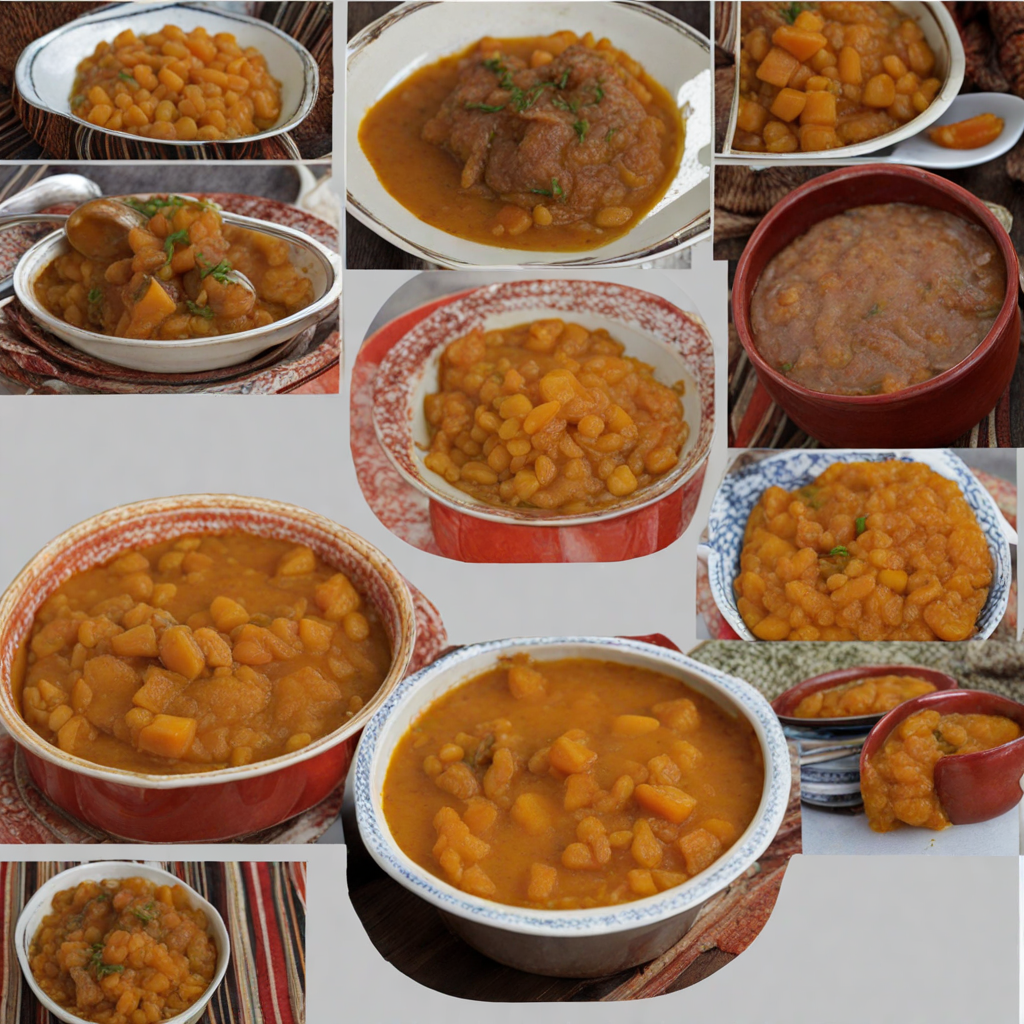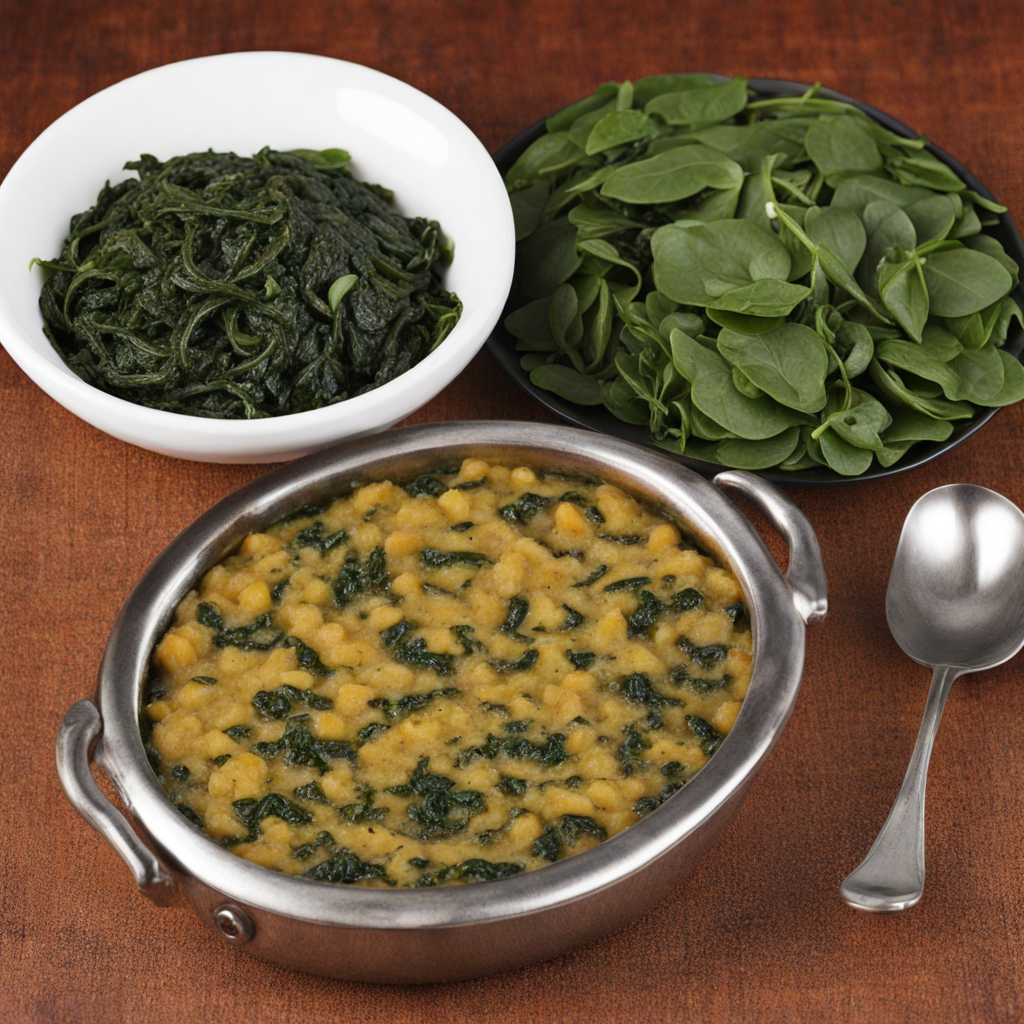Mokopu
Mokopu is a traditional Basotho dish that embodies the rich culinary heritage of Lesotho. This delightful food is primarily made from maize meal, which is a staple in the region, and is often combined with a variety of ingredients to enhance its flavor and nutritional value. The preparation typically involves boiling the maize meal until it reaches a thick, porridge-like consistency, which serves as a comforting base for various toppings. The texture is creamy and smooth, making it an inviting dish that pairs well with a range of accompaniments. What sets Mokopu apart is its versatility, allowing for customization based on personal preferences or regional variations. It can be served with a variety of toppings such as sautéed vegetables, rich stews, or even a drizzle of spicy chili sauce, all of which contribute to a delightful explosion of flavors in each bite. In some households, Mokopu is enjoyed alongside traditional meats, such as lamb or chicken, which have been marinated and slow-cooked to perfection, further enriching the dish's taste profile. Beyond its mouthwatering flavor, Mokopu holds cultural significance in Basotho society, often being shared during communal gatherings and celebrations. This dish not only nourishes the body but also fosters a sense of community and belonging among those who partake in it. For those seeking to discover new and exciting tastes, Mokopu offers a unique glimpse into the heart of Lesotho's culinary traditions, inviting food lovers to explore its comforting and hearty essence.
How It Became This Dish
Mokopu is a traditional dish from Lesotho, a landlocked country in Southern Africa, nestled within the borders of South Africa. The roots of this dish can be traced back to the indigenous Basotho people, who have inhabited this region for centuries. Mokopu, primarily made from maize meal, is a staple food that reflects the agricultural practices and cultural heritage of the Basotho. Mokopu’s origin is closely linked to the cultivation of maize, which was introduced to Southern Africa by European settlers in the late 17th century. Before maize, the Basotho relied heavily on sorghum and other indigenous grains. As maize became more popular due to its adaptability to the climate and its high yields, it gradually replaced older grains in many local diets. The process of making mokopu involves boiling maize meal with water until it thickens into a porridge-like consistency, which can then be molded into shapes or served in a bowl. This process showcases the ingenuity of the Basotho in making the most of available ingredients. Culturally, mokopu holds significant importance in Basotho society. It is often associated with communal gatherings and celebrations, serving as a symbol of hospitality and togetherness. When families or communities come together for events such as weddings, funerals, or harvest celebrations, mokopu is usually present as a main dish. Its preparation can be communal as well, with members of the community participating in the cooking process, strengthening social bonds and reinforcing cultural traditions. Over time, mokopu has evolved, adapting to modern culinary practices while still retaining its traditional significance. In the past, mokopu was often enjoyed plain or with simple sides, such as vegetables or meat. However, contemporary variations include a range of ingredients, such as cheese or spices, reflecting influences from other cultures and modern tastes. This evolution illustrates the dynamic nature of Basotho cuisine, as it continues to integrate new flavors while honoring its historical roots. The significance of mokopu extends beyond mere sustenance. It is often viewed as a rite of passage for young women in Basotho culture, who learn to prepare the dish as part of their upbringing. This traditional knowledge is passed down through generations, ensuring that the cultural practices surrounding food preparation and consumption are preserved. The act of making mokopu is imbued with lessons about family values, community, and the importance of sharing. In addition to its role in social gatherings, mokopu also reflects the agricultural calendar of the Basotho. The timing of its preparation often coincides with the harvesting of maize, marking the end of one season and the beginning of another. This seasonal aspect adds layers of meaning to the dish, making it a representation of the connection between the people and the land they inhabit. As Lesotho has faced various socio-economic challenges, the preparation and consumption of mokopu have also adapted. In urban areas, where traditional farming practices may not be as prevalent, mokopu can be found in local markets and eateries, allowing it to remain a crucial part of the national identity. The dish’s accessibility and simple ingredients make it a viable option for many, preserving its status as a beloved staple in the Basotho diet. Mokopu is not only a food item but also a symbol of resilience for the Basotho people. Throughout history, they have faced numerous adversities, including colonialism, economic struggles, and environmental challenges. The ability of the Basotho to maintain their culinary traditions, such as mokopu, is a testament to their cultural endurance and the importance of food in fostering a sense of identity and belonging. In recent years, there has been a renewed interest in traditional foods around the world, and mokopu is no exception. Efforts to promote Basotho cuisine, including mokopu, have gained traction, with chefs and food enthusiasts exploring its potential for both local and international markets. This revival not only highlights the flavors of Lesotho but also educates others about the rich culinary heritage of the Basotho people. As mokopu continues to be enjoyed and celebrated, it remains a reminder of the deep-rooted traditions that shape the identity of the Basotho. Its preparation and enjoyment foster community ties and serve as a vehicle for cultural expression. The dish’s ability to adapt and evolve while retaining its core significance speaks to the resilience of the Basotho culture and their enduring connection to the land. In conclusion, mokopu encapsulates the essence of Lesotho’s culinary heritage. From its origins rooted in agriculture to its cultural significance in community gatherings and rites of passage, this traditional dish has developed over time while remaining a staple in the lives of the Basotho people. As it continues to adapt to contemporary influences and challenges, mokopu stands as a symbol of identity, resilience, and the importance of food in cultural heritage.
You may like
Discover local flavors from Lesotho







